Illustration not included in supplement volume
This is a large race of A. cinnamomea, but is certainly distinguishable.
It appears to be confined to the Tres Marias Islands, where it was discovered by the late Colonel Grayson, and it has since then been found in the same locality by Mr. Forrer.
Colonel Grayson has given the following notes on the species as observed by him:—
In my visit to the Tres Marias it has been my good fortune to discover this new addition to the large group to which it belongs.
This rather large Humming-bird is very abundant on the islands, where they seem to be continually at war with each other; in fact they attack every bird, and even the butterflies, should they approach some chosen flowering plant which they guard unremittingly as their own treasure. As they dart like a golden sunbeam through the woods, they often utter their shrill note of t’weet, t’weet, t’weet.
Sometimes combats between them become of a desperate nature. One day while watching a number of them in active motion around some tobacco flowers (of which they seem to be very fond) two fine males after darting at each other for some time, at length came to a deathly struggle, high above my head; they finally clinched each other, each having one the other in his mouth, at the same time scratching with their claws, and using their wings with the greatest force, and in this situation, whirling round and round, they fell to the ground near my feet. During this terrible conflict, in which desperation and passion were exhibited, I observed them for a few seconds and then gently placed my hat over both; even after they were thus captured, and I held one in each hand, they evinced a desire to continue the war.
I have seen this species frequently darting from its perch upon passing diminutive flies, like a real flycatcher. JI found the gizzard, when examined, always well filled with them and other minute insects.
Neither of these species have I seen on the mainland; it would seem, therefore, that they belong entirely to this locality, where perhaps other species may yet be found.
Here amid such luxuriance of flowers and leaves, and wild entanglement of climbing plants and vegetable glory, it would be surprising if no others should be discovered in this favored spot, where the flowers seem to vie with the brilliant tints of the ‘brave little humming-birds.’
The bill of this species is long, but slightly arched, depressed at base, where it is orange-yellow above and below, the rest black; the wing a little recurved, and of a purplish-brown; tail with broad feathers and slightly forked, is of a deep cinnamon-red, tipped with black and green reflections, the balance of the upper parts golden-green with metallic reflections, slightly tinged with rufous on the forehead. Entire underparts light cinnamon-red or rufous. Iris brown; feet dark brown. Total length 4·75 inches, alar. ext. 6·5, bill 1·02, tail 1·75.
[R. B. S.]
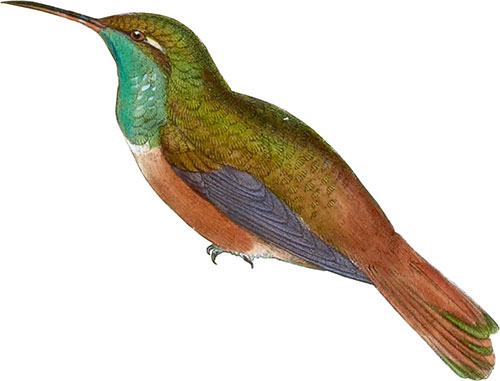 Amazilia pristina
Amazili
Amazilia pristina
Amazili
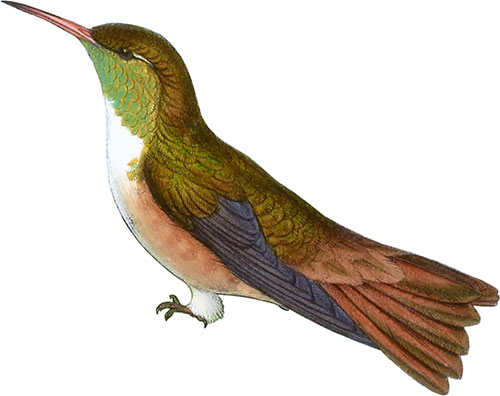 Amazilia alticola
Mountain Amazili
Amazilia alticola
Mountain Amazili
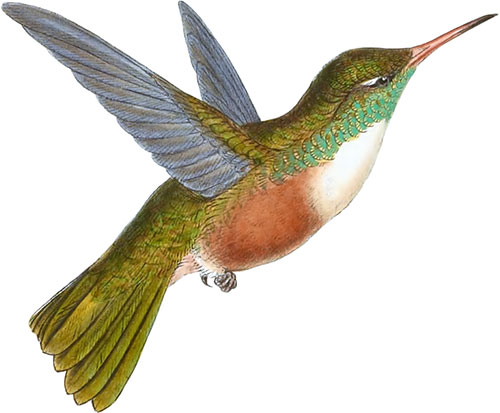 Amazilia Dumerili
Dumeril’s Amazili
Amazilia Dumerili
Dumeril’s Amazili
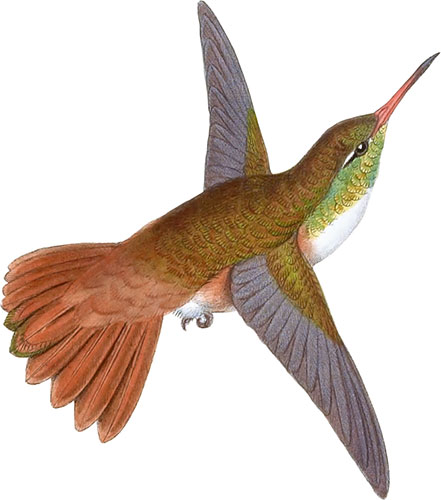 Amazilia leucophæa
White-breasted Amazili
Amazilia leucophæa
White-breasted Amazili
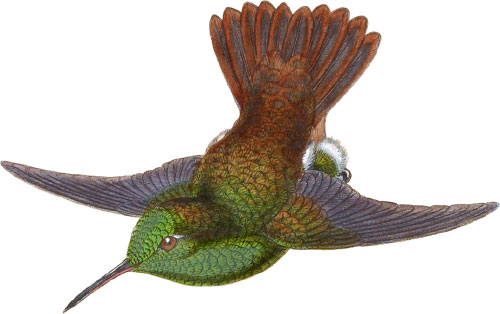 Amazilia cupreicauda
Copper-tailed Amazili
Amazilia cupreicauda
Copper-tailed Amazili
 Amazilia iodura
White-vented Amazili
Amazilia iodura
White-vented Amazili
 Amazilia lucida
Elliot’s Amazili
Amazilia lucida
Elliot’s Amazili
 Amazilia warszewiczi
Warszewicz’s Amazili
Amazilia warszewiczi
Warszewicz’s Amazili
 Amazilia elegans
Elegant Amazili
Amazilia elegans
Elegant Amazili
Featuring all 422 illustrated species from John Gould’s A Monograph of the Trochilidæ, or Family of Humming-Birds arranged by color.